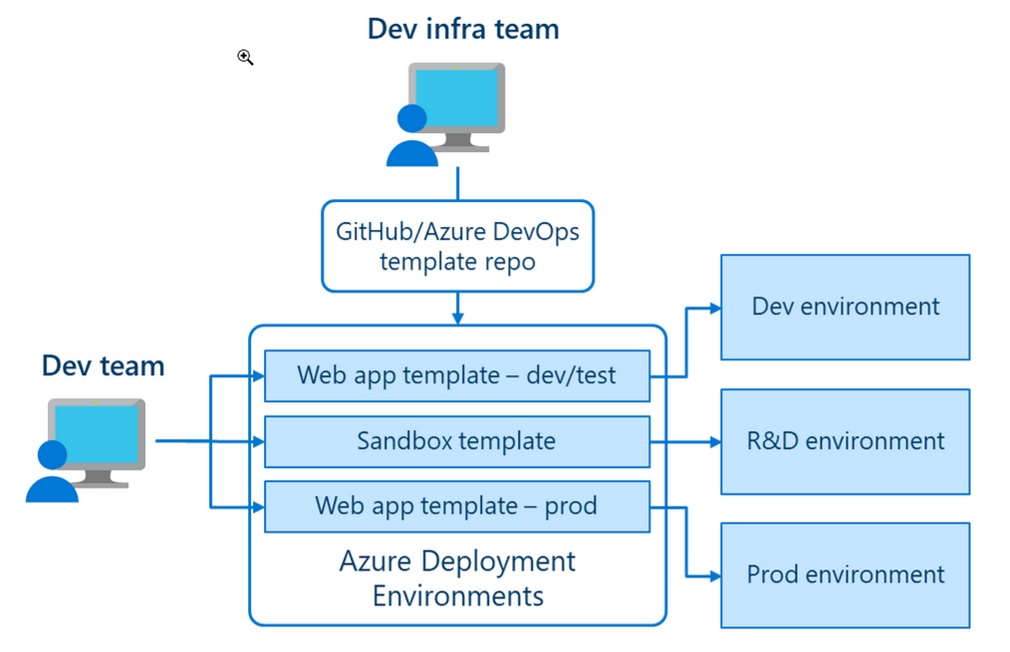
During its annual Ignite conference, Microsoft revealed features for developers that include an updated Azure App Service with support for Go, the addition of GitHub security features to Azure DevOps, and a preview of Azure Deployment Environments, allowing for a quick spinup of cloud environments for assessing applications.
In addition, the low-code web development tool Power Pages is now generally available.
Azure App Service is one of the oldest and most used Azure features. According to principal program manager Byron Tardif, the service was introduced in June 2012 and is now “called an XXL service in Azure internally, a designation only shared with 3 other services.”
The attraction for developers is simplicity: deploy an app or container, scale easily from a free starter service to 20 high-spec instances with auto scaling. In August, as Tardif explained, the platform was redesigned to change its “front-end role,” which works in conjunction with Azure Load Balancer to terminate SSL connections and route traffic to the right VM. In the redesign, Microsoft’s Windows web server IIS (Internet Information Server) was replaced with Kestrel, the native .NET webserver, and the .NET reverse proxy YARP (Yet Another Reverse Proxy), enabling support for the gRPC protocol and up to 80% improvement in throughput.
Now, at Ignite, the company has added Go support to App Service, according to principal program manager Stefan Schackow. In addition, Python 3.10 and PHP 8.1 are now built into the platform, with Python 3.11, PHP 8.2 and Node.js 18 set to follow soon. Developers can already use runtimes of their choice via custom containers on App Service, but with more friction than using the built-in options.
Next up at Ignite is the addition of what the company calls “GitHub Advanced Security” for Azure DevOps. This touches on a matter of confusion for developers, which is the overlapping functionality of Azure DevOps, a platform which predates the GitHub acquisition, and GitHub itself. One might have expected the two to merge, but this has not happened. Therefore we have both GitHub Actions and Azure Pipelines, for example, and a document to help developers puzzle out the differences.
One area where GitHub is ahead of Azure Devops is security features, such as scanning for credentials inadvertently included in repositories, scanning for insecure dependencies, and detecting coding errors such as SQL injection vulnerabilities. Those features are now in preview for Azure DevOps, though partner director of Product Aaron Hallberg said this is only for “limited private preview customers in early November 2022.” Additional new features for Azure DevOps are planned and listed here.
Microsoft Dev Box is a service we looked at here; it enables Azure administrators to create dedicated VMs for developers, though we were not impressed with the complexity of the setup. Now the company has added Azure Deployment Environments in preview, templates for defining cloud infrastructure for application deployment, to complete the developer workflow, whether for development, research, or production.
“Templates are built as ARM (and eventually Terraform and Bicep) files and kept in source control repositories with versioning, access control, and pull request processes,” said senior product manager Sagar Chandra Reddy Lankala. The lack of Terraform or Bicep support suggests that this is early days for the preview.

Finally, the company said that Power Pages, a low-code web application authoring tool and platform, is now generally available. Despite its low-code designation, one of the features is the integration of Visual Studio Code Web “for a seamless round-trip experience between Power Pages’ no-code Design Studio to the code-first VS Code Web,” said VP Power Portals Sangya Singh.
Users get the benefit of rapid development, but at the cost of licensing “based on monthly authenticated and anonymous users per website,” according to Singh. It is hard to put a price on productivity, but for performance and running cost Azure App Service may well work out to be the better option.
